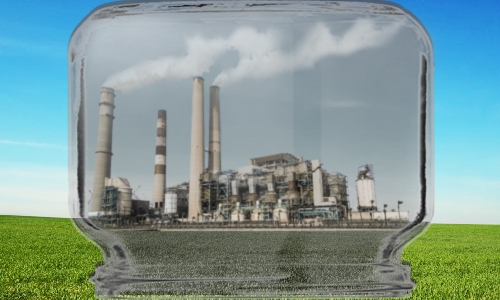Carbon Capture and Sequestration: How to remove the barriers?
Tun? Durmaz1 and Aude Pommeret
 Eight years on since the United Nations IPCC was awarded the Nobel Peace Prize in recognition of its effort in combating climate change, fossil fuel remains the most dominant global energy source. As the total replacement of fossil fuel burning is not expected to take place immediately in the near future, the International Energy Agency (IEA) has repeatedly declared carbon capture and sequestration (CCS) as a key technology for mitigating climate change. 2
Eight years on since the United Nations IPCC was awarded the Nobel Peace Prize in recognition of its effort in combating climate change, fossil fuel remains the most dominant global energy source. As the total replacement of fossil fuel burning is not expected to take place immediately in the near future, the International Energy Agency (IEA) has repeatedly declared carbon capture and sequestration (CCS) as a key technology for mitigating climate change. 2
Although CCS is envisioned to play critical role in the fight against climate change, why have these technologies not had an international breakthrough? And what needs to be done for it to happen?
From an economic perspective, there are 3 major barriers for CCS technology development. The first arises from the competition from non-fossil based energy carriers including renewables and nuclear. The second concerns the maturity of the CCS technology. The last is related to the cost of capture and storage.
Let us first consider the competition from other energy carriers. Wind and solar, when coupled with storage technologies to tackle intermittency issue, allow power generation without the emission of greenhouse gases. The same is true for nuclear energy but its public acceptance has been on decline following the Fukushima Daiichi nuclear disaster. Therefore, wind and solar are considered the most serious competitor with the CCS-mitigated fossil fuel. However, the formers’ high costs compared to the fossil fuel render unlikely threats to the use of CCS.
Turning to the degree of maturity of the CCS technology, one has to recall that CCS has three major components: (CO2) capture, transportation (of CO2 in a liquid-like state) and geological storage. Although these three components are in commercial use, their integration and the scaling up of CCS is yet to be seen. The Saskpower’s Boundary Dam CCS project in Saskatchewan, Canada, has been plagued with numerous shutdowns that cost CAD$1.2 million (HKD 7 million) in penalties. Similarly, the CCS facility in Mississippi Power’s Kemper County lignite plant has been struggling with delays, most recently, related to the ash removal system.3 From these examples, it is evident that the CCS technology has been facing first-of-its-kind risks to costs.
The last barrier, that is, the cost of CCS, is apparent. A lower cost of CCS per ton CO2 will make it more economically feasible. Yet, according to the report of the Office of the Canadian Parliamentary Budget Officer (see p 40), the cost for the Boundary Dam CCS project has come in at CAD$ 917 million (HKD 5.32 billion) — it was originally budgeted to cost CAD$800 million (HKD 4.64 billion). Putting together estimates of revenues and expenditures, the project is expected to generate a loss of CAD$ 1 billion (HKD 5.8 billion). 4
In order to overcome these barriers, two factors stand out. The first one concerns the carbon policy. The second one is an improved technology that would allow for a successful integration the three major components at a lower cost.
Carbon policy is imperative for CCS. Unless CO2 emissions are taxed, a coal-fired power plant will have no incentives for using CCS. It will simply release CO2 into the atmosphere. The same applies if the emission tax is lower than the cost of CCS. It has been estimated that emission tax of CAD$ 57 (HKD 331) per ton CO2 will be necessary to motivate a power plant to undertake a CCS project.
To improve the technology, an important component is learning-by-doing (LbD). LbD is simply productivity gains through production practice, minor innovations, and specialization. Saskpower stated that LbD can reduce costs by approximately CAD$200 million (HKD 1.16 billion) on its ongoing CCS activities. In this case, a CAD$47 (HKD 273) per ton CO2 carbon tax will allow the power company to undertake a CCS project.
With the growing number of CCS projects, it is only a matter of time before all the technological drawbacks are properly addressed. Thus, to have CCS, what remains to be seen is a credible carbon policy that can allow investors to undertake CCS projects. This will be crucial in building a global CCS industry to deal with fossil fuels as the dominant energy source in the coming decades.